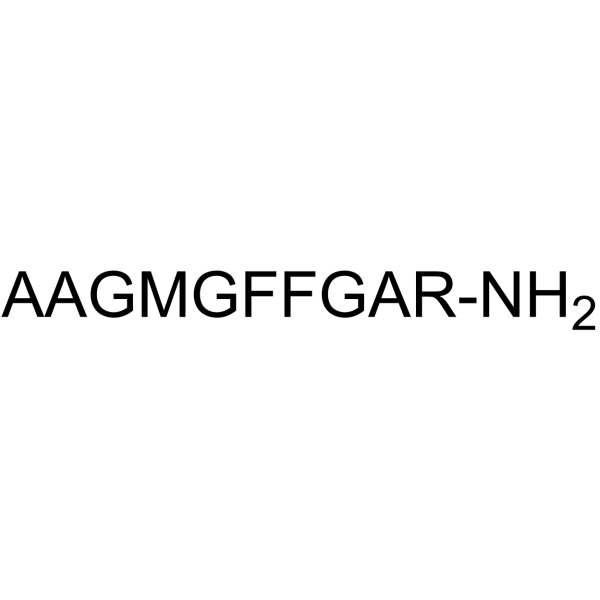
Urechistachykinin II
CAS No. 149097-04-1
Urechistachykinin II( Uru-TK II )
Catalog No. M29717 CAS No. 149097-04-1
Urechistachykinin II (Uru-TK II) is an invertebrate rapid kinin-related peptide (TRPs) isolated from carotenoid worms.
Purity : >98% (HPLC)
 COA
COA
 Datasheet
Datasheet
 HNMR
HNMR
 HPLC
HPLC
 MSDS
MSDS
 Handing Instructions
Handing Instructions
| Size | Price / USD | Stock | Quantity |
| 100MG | Get Quote | Get Quote |


|
| 200MG | Get Quote | Get Quote |


|
| 500MG | Get Quote | Get Quote |


|
Biological Information
-
Product NameUrechistachykinin II
-
NoteResearch use only, not for human use.
-
Brief DescriptionUrechistachykinin II (Uru-TK II) is an invertebrate rapid kinin-related peptide (TRPs) isolated from carotenoid worms.
-
DescriptionUrechistachykinin II (Uru-TK II) is an invertebrate rapid kinin-related peptide (TRPs) isolated from carotenoid worms.
-
In Vitro——
-
In Vivo——
-
SynonymsUru-TK II
-
PathwayGPCR/G Protein
-
TargetAntibacterial
-
Recptor——
-
Research Area——
-
Indication——
Chemical Information
-
CAS Number149097-04-1
-
Formula Weight983.15
-
Molecular FormulaC44H66N14O10S
-
Purity>98% (HPLC)
-
Solubility——
-
SMILES——
-
Chemical NameSequence:{Ala}{Ala}{Gly}{Met}{Gly}{Phe}{Phe}{Gly}{Ala}{Arg}-NH2
Shipping & Storage Information
-
Storage(-20℃)
-
ShippingWith Ice Pack
-
Stability≥ 2 years
Reference
Sung WS, et al. Antimicrobial effect and membrane-active mechanism of Urechistachykinins, neuropeptides derived from Urechis unicinctus. FEBS Lett. 2008 Jul 9;582(16):2463-6.
molnova catalog



related products
-
Omadacycline
Omadacycline a new tetracycline antibiotic can inhibit the 30s subunit of bacterial ribosome.
-
Clindamycin phosphat...
Clindamycin Phosphate is a lincosamide antibiotic for Plasmodium falciparum.
-
MUT-056399
A novel, highly potent inhibitor of the FabI enzyme of both Staphylococcus aureus and Escherichia coli.



 Cart
Cart
 sales@molnova.com
sales@molnova.com


